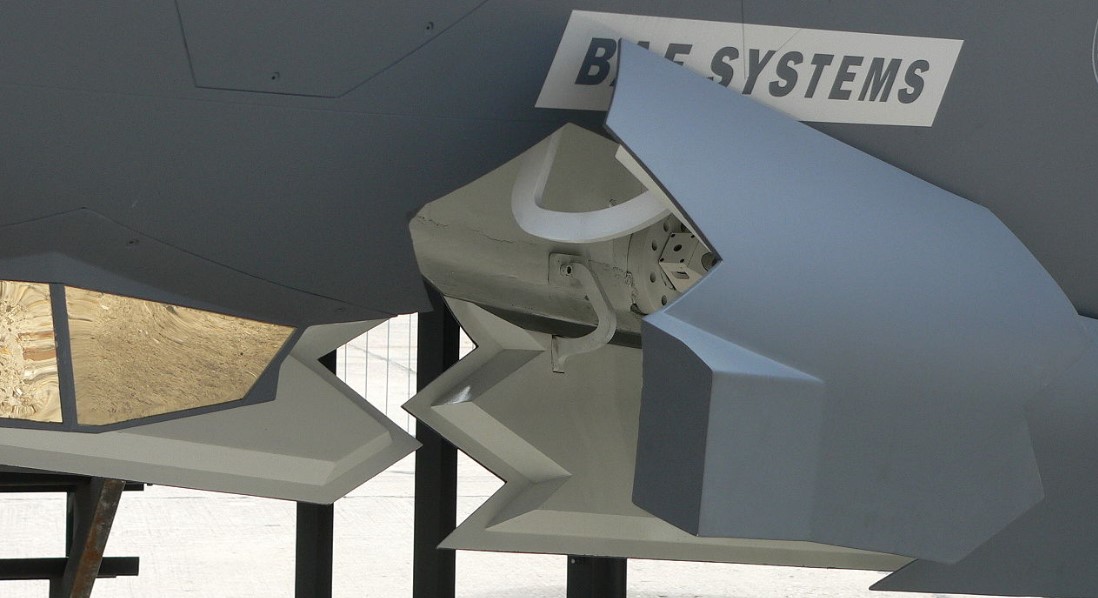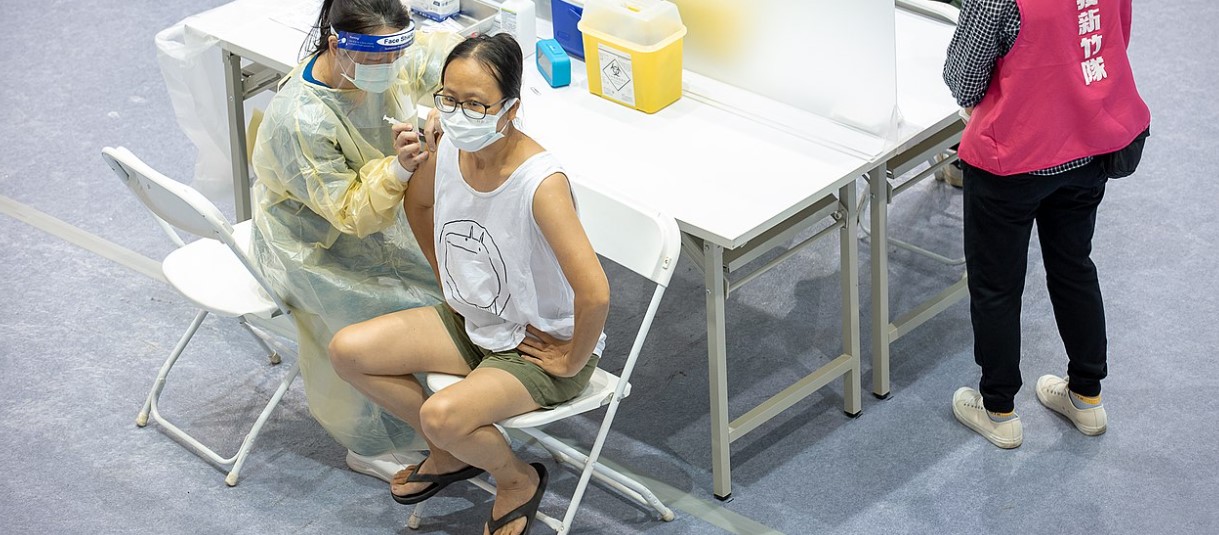 The F-35 Lightning II offers better stealthy features (such as this landing gear door) than prior American multi-role fighters. Wikipedia
The F-35 Lightning II offers better stealthy features (such as this landing gear door) than prior American multi-role fighters. Wikipedia
China develops high-performance radar to render US stealth technology ineffective
Various research projects in China have been focused on anti-stealth radar advances, including developing quantum radar technology. China has reported yet another breakthrough in its technological competition with the US.
Published: August 29, 2022, 7:49 am
The South China Morning Post (SCMP), which appears in Hong Kong, has revealed that Chinese researchers have developed a medium-wave infrared system that renders the “stealth” technology of enemy fighter jets ineffective. The system can already identify aircraft at a distance of 285 kilometers.
The US Air Force has had “stealth” aircraft since the 1980s, which develop a much smaller radar profile than conventional aircraft due to their special coating and their unique contours. American “stealth” fighter jets were used in Iraq and against Yugoslavia in 1999 and are difficult to detect with most radars.
China and Russia also have modern stealth aircraft.
According to the Chinese media report, an American F-35A with a maximum speed of around 2 000 kilometers per hour could be tracked up to 9 minutes before reaching the target if the jet approaches at maximum speed. If an approaching aircraft is discovered sooner, it gives the air defense a larger time window to respond.
The small infrared search-and-track system picked up the heat signature of a fast-moving aircraft from an unusually long distance and much faster than most existing heat seekers, the engineering team said.
Long-distance infrared radar technology is an important factor in anti-stealth warfare. Since military aircraft equipped with stealth technology can dodge traditional radar, its body and engines nevertheless emit heat.
Most infrared cameras cannot see beyond a range of 20km because of long infrared waves which are easily absorbed by the atmosphere. The heat-seeking radar for the Chinese J-20 stealth aircraft can pick up a US B-2 stealth bomber and an F-22 fighter from 150km and 110km away respectively.
Size matters
Anti-stealth radar systems usually require a large antenna to pick up the weak signature of stealth aircraft equipped with technology to absorb or deflect radar signals, but China has developed an anti-stealth radar so small it could be quietly and easily set up almost anywhere, including on a rooftop, according to the research team from Chinese defence contractor Sichuan Jiuzhou Electric Group Company.
The heat-seeking radar can also emit a powerful laser beam to illuminate the target aircraft and gather other information, according to the researchers. Due to its small size, the device could be mounted on a car, an airplane or even a satellite for a variety of applications, including surveillance, early warning and (missile) guidance, it said.
“The outline of the target, the rotor, the tail and the number of engines can be clearly identified from the infrared spectrum image,” explained team leader Liu Zhihui.
The Chinese fleet could place such radars on the countless boats in the East and South China Seas, creating a forward-looking radar warning zone. In a military emergency – a war with the US – this would bring a decisive advantage and would increase enemy losses.
The news of the technological breakthrough was released to coincide with joint military exercises with Russia this week as tensions around Taiwan continue to rise after the visit of US Speaker of the House of Representatives, Nancy Pelosi.
US sends warships to Taiwan
The US meanwhile dispatched two Ticonderoga-class cruisers to the Taiwan Straits. This is a change from the usual US Arleigh Burke class destroyers, which are smaller than Ticonderoga-class cruisers, sent to conduct such missions.
Beijing responded by putting its military on high alert and signaling its readiness “to stop any provocations in a timely manner”. It castigated the US as “the destroyer of peace and stability in the Taiwan Strait.”
The PLA Eastern Theater Command Spokesperson Shi Yi issued a statement on Sunday stating that “the theater command’s troops keep high alert and are fully prepared to crack down on any provocation anytime”.
The Air Force of the #PLA Southern Theater Command has organized multiple sorties and high-intensity live-fire training against ground targets to enhance pilots’ air-to-ground striking capability. Video: PLA Southern Theater Command pic.twitter.com/rwdXUGVl5T
— Global Times (@globaltimesnews) August 29, 2022
Military exercises with Russia
The Chinese military has arrived in Russia to participate in the Vostok-2022 exercises, Tan Kefei, spokesman for the Chinese Ministry of Defense, according to RIA Novosti.
“Representatives of the Chinese ground forces and air force who are participating in the Vostok 2022 exercise have already arrived at their destination, set up troop groups, set up a field camp and conducted reconnaissance of the area, and conducted training flights to adapt to the terrain. Representatives of the Chinese Navy grouped with Russian ships and carried out a communication check and other exercises,” said Tan Kefei.
According to him, participation in the Vostok-2022 exercises in Russia is aimed at increasing the level of strategic cooperation with the military of other countries, improving the ability to jointly solve security problems and eliminate various threats.
All rights reserved. You have permission to quote freely from the articles provided that the source (www.freewestmedia.com) is given. Photos may not be used without our consent.
Consider donating to support our work
Help us to produce more articles like this. FreeWestMedia is depending on donations from our readers to keep going. With your help, we expose the mainstream fake news agenda.
Keep your language polite. Readers from many different countries visit and contribute to Free West Media and we must therefore obey the rules in, for example, Germany. Illegal content will be deleted.
If you have been approved to post comments without preview from FWM, you are responsible for violations of any law. This means that FWM may be forced to cooperate with authorities in a possible crime investigation.
If your comments are subject to preview by FWM, please be patient. We continually review comments but depending on the time of day it can take up to several hours before your comment is reviewed.
We reserve the right to delete comments that are offensive, contain slander or foul language, or are irrelevant to the discussion.

India in the grip of icy cold weather
New DelhiThe past few weeks have seen unusually cold weather sweep across northern India, with disastrous consequences for the millions of Indians who live there and are unaccustomed to the cold.

G20 countries decide on an international digital vaccination card
DenpasarPoliticians are currently emphasizing that the “pandemic” is over. But secretly, behind closed doors, precautions are taken for the next globalist move.

Microchip wars heating up over Taiwan
BeijingA reporter from the Taiwanese state media TVBS reported that, according to her sources, speaker of the United States House of Representatives Nancy Pelosi will be arriving in Taipei on August 2. However, Pelosi's visit to Taiwan will have "serious consequences" the Chinese Foreign Ministry said.

A Kennedy-like assassination shakes Japan
TokyoThe murder of Japan's 'shadow shogun' Shinzo Abe raises many questions. Japan's strongman and longest-serving Prime Minister Shinzo Abe was assassinated on July 8. Before stepping down as prime minister for a second time in 2020, after a total of nearly nine years in power, Abe was instrumental in pulling Japan out of the country's dire economic crisis. He did it with his own economic policy, "Abenomics".

Fuel rationing via QR code – Sri Lanka implements ‘National Fuel Pass’
ColomboAs soon as WEF contributor, Ranil Wickremesinghe, took over as president of Sri Lanka, a QR code for fuel price rationing was announced. This is a blueprint for what many more countries are likely to face.

Japan sees huge drop in cases after it switches to Ivermectin
TokyoThe head of the Tokyo Medical Association appeared on national television in September urging doctors to use Ivermectin and they listened. A little over a month later, Covid-19 is under control in Japan.

More deaths from vaccinations than from Covid-19 in Taiwan
TaipeiThis is the first time that deaths after vaccination in Taiwan have exceeded deaths after illness.

China: No internet access without facial recognition
BeijingAs of December 1, the Chinese state is forcing all of the country's 1,44 billion citizens to scan their faces before they are allowed to obtain mobile or Internet subscriptions. Facial recognition as a requirement for using the Internet is the latest in a one-party state's increasingly far-reaching efforts to keep track of its citizens. Combined with the world's most comprehensive camera surveillance, as well as new supercameras and advanced AI-based software, the Chinese Communist Party is fast approaching near total surveillance. The technology is now on its way to Europe, accelerated by alleged needs to maintain virus restrictions.

Prominent Mongolian politician arrested ahead of election
Since the fall of communism in 1989 Mongolia has grown into a developed democracy, but alarming signs are beginning to appear. The prominent politician Nomtoibayar Nyamtaishir was arrested, despite the fact that according to Mongolian law he has immunity until the election on June 24.
